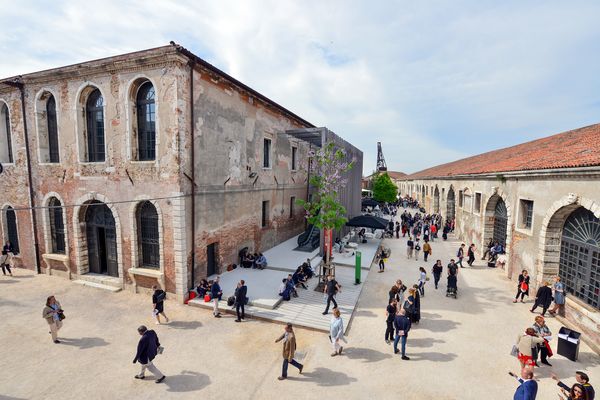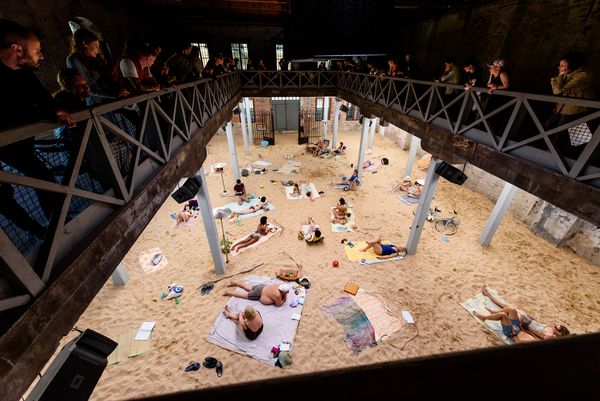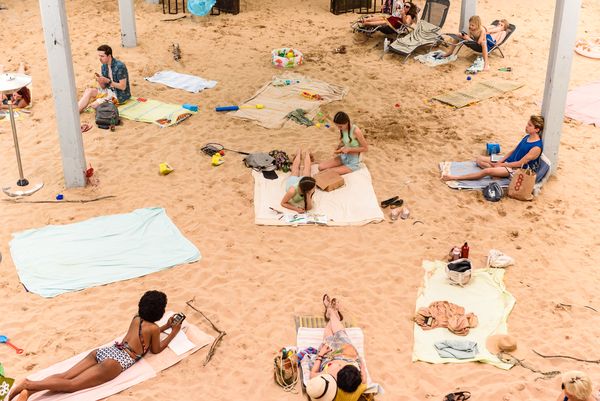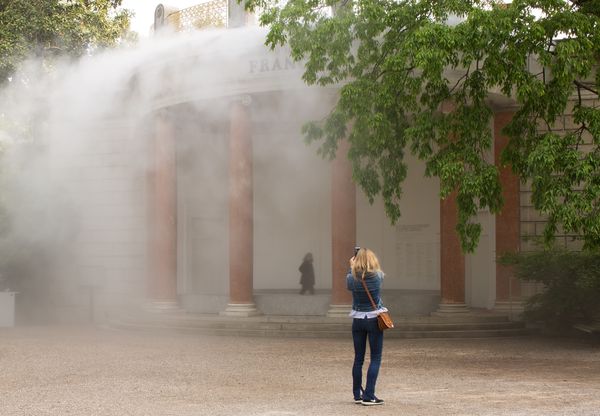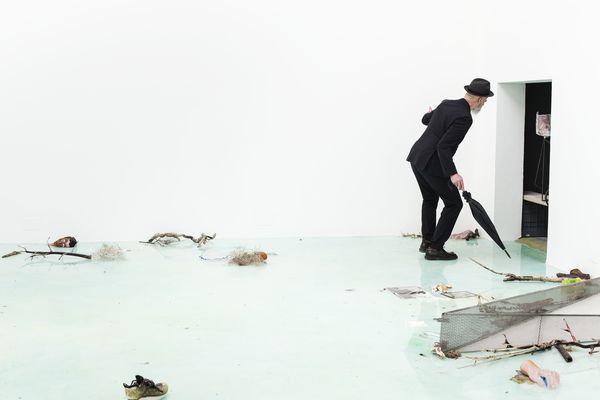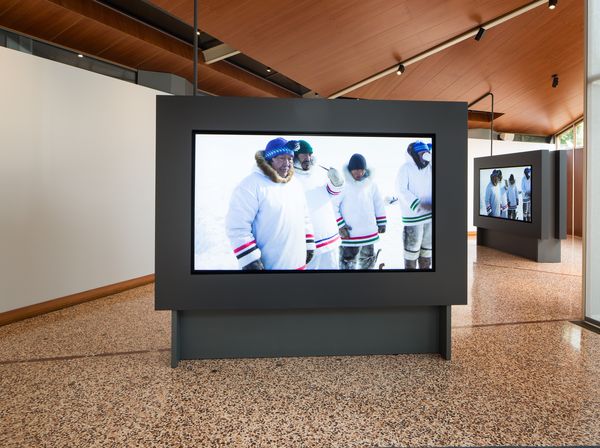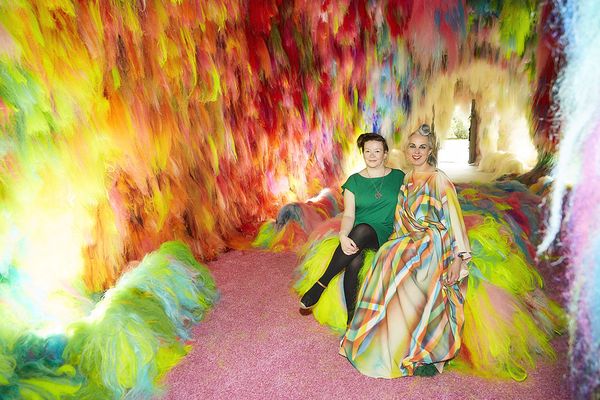Photo by Andrea Avezzù, courtesy of La Biennale di Venezia
Bright skies and iconic waterways form the backdrop to the 58th Venice Biennale. With over 120 years of history, the event is the world's longest-running art festival — a kind of "State of the Union" for contemporary art. In the past, Klimt, Hopper and Warhol have all exhibited on the floating city; more recently, Abramović and Hirst.
Curated by Ralph Rugoff, the American-born director of the Hayward Gallery in London, this year's Biennale is titled May You Live in Interesting Times. The showcase sees 79 artists taking part in addition to 89 national participants. Here, we look at some of the people, pavilions and themes making a splash in Venice.
Photo by Francesco Galli, courtesy of La Biennale di Venezia
Lithuania
Inside the Lithuanian Pavilion, photo by Andrea Avezzù, courtesy of La Biennale di Venezia
It was Lithuania's astonishing entry that took the Golden Lion for Best National Participation. Helmed by three female artists — composer Lina Lapelyte, playwright Vaiva Grainyte and theater director Rugile Barzdziukaite — the revelatory performance tackles climate change. Sun & Sea (Marina) transformed the pavilion into an artificial beach with colorful swim-suited performers. Spectators peer down from a balcony onto a leisurely sun-kissed tableau, critiquing our own indifference to impending environmental disaster.
It is equal parts The Truman Show and Where's Waldo, with children (the artists' actual children) lying under beach umbrellas playing with a dog. The calls of seagulls echo as distracted teenagers scroll through their smartphones. Strange, voyeuristic and melancholic, the ensemble breaks out into an unfurling contemporary opera about sunburn and climate catastrophe. The astounding piece is still being crowd-funded, and visitors can even apply to participate in it. Reflecting the so-called "interesting times" we live in, environmental issues are a recurring motif at the Biennale.
France
Outside the French Pavilion, photo by Francesco Galli, courtesy of La Biennale di Venezia
Deep See Blue Surrounding You by French multimedia artist Laure Prouvost is another standout. Audiences are guided underneath the French Pavilion, then upstairs to a room with a glassy transparent floor that looks like water. Littered with old dolls, cigarette butts and discarded cell phones, the space speaks to society's impact on nature.
Inside the French Pavilion, photo by Francesco Galli, courtesy of La Biennale di Venezia
In another room, we follow an eclectic group of characters (including a rapper, a dancer and a magician) as they embark on a road trip from the Parisian suburbs to Venice. The artist's weird, phantasmagoric and, at times, lunatic universe is a crash course of performance, installation and film.
The Turner-prize winning Prouvost — a naturalized British citizen — has been secretly digging an underground tunnel uniting her with the British pavilion. The artist says she is building bridges with the full cooperation of British entrant Cathy Wilkes in the wake of Brexit.
Decolonization and Indigenous Art
Inuit Art in the Canadian Pavilion, photo by Francesco Galli, courtesy of La Biennale di Venezia
Many of the national pavilions look at decolonization and indigenous identity. Finland focused on the native Sámi people of northern Scandinavia. Belgium playfully questioned the whitewashing of history, while Canada's entry came from an Inuit collective. Further strong statements could be found at the collateral events, including Aboriginal Australian artist Richard Bell's project We Don’t Really Need This / EMBASSY, which was originally submitted to be Australia's official entry. After it didn't go through, the 66-year-old crowd-funded the project and installed it in the sculpture garden. The installation protests colonialism and dispossession in the contemporary art world. For the opening ceremony, Bell had a replica of the Australian pavilion, wrapped in chains, sail past the shores of the high-status art fair.
Detail from Theatrum Orbis Terrarum by Alan Michelson, 2019
Near the Arsenale venue, Volume 0 (presented by the Zuecca Projects) hands the mic over to Native American / First Nations artists, Alan Michelson and Nadia Myre. Curated by anthropologist Max Carocci, the project re-interprets European history, honing in on the often-unheard relationships between Venice and Native peoples. As early as the 15th century, the city-island literally manufactured knowledge and maps about the "new world" as the printing capital of Europe.
Iceland
Birta Guðjónsdóttir and Hrafnhildur Arnardóttir (aka Shoplifter) inside the Icelandic Pavilion, © Elisabet_Davidsdottir
Tufts of fluorescent green, pastel blue and pink hair transform a Venetian warehouse into a fun, otherworldly cave of fluff in the Iceland Pavillion on Guidecca Island. Icelandic Metal band HAM provides a subdued, gurgling soundtrack. Installation artist Hrafnhildur "Shoplifter" Arnardóttir is famed for creating unique environments that she hopes will embrace visitors. The end result is ancient and primal, but simultaneously playful and even cute.
Known for her collaborations with Björk (she designed the Medúlla album cover), her fascination with hair started at a young age when she discovered her grandmother's cut-off braid in a drawer, like a relic of her lost youth. Years later, the fiber has become "Shoplifter's" signature material.
